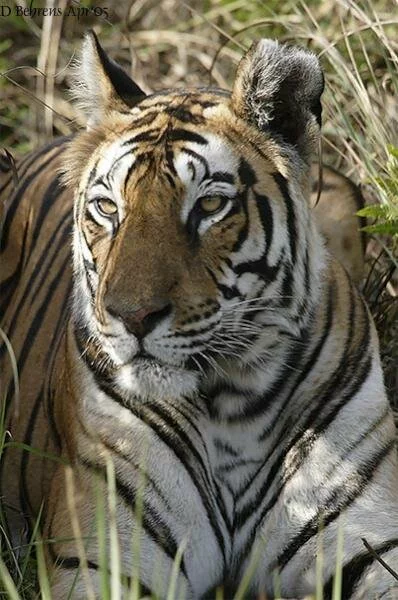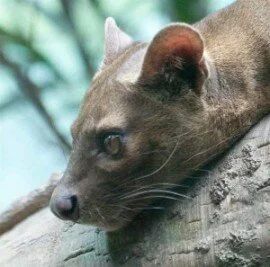Power and Nobility: The Domain of the Tiger
Possessing beauty, courage, and great power, it is no surprise that tigers (Panthera tigris) are among the most well known animals in the world. Their attributes make them both the subject of admiration and sometimes hatred. They are loved by many people yet all species are endangered and some are very close to extinction. The tiger is certainly in an odd spot compared to many other species as their future is uncertain despite their immense popularity with the general public. Almost just as interesting are the lives they carry out. The struggles they must endure in harsh climates, the enemies they encounter in the wild and with humans, and their search for a mate to continue their generations despite the near eradication of their species are all amazing to bear witness to. All of these topics and more will be discussed in this article.
The world of the tiger has changed greatly over time. Though they were once found throughout Asia, their current range is vastly different. Only fragmented populations remain in India, China, and Southeast Asia. The population in West Asia was eradicated during the 19th century and the species continues to face decreasing numbers. To find and record a tiger in its natural habitat is a rarity, but the footage one can expect to gain is remarkable. Part of this is due to wide range of habitats that some species live in. For example, the Bengal tiger’s habitats include evergreen and temperate deciduous forests as well as mangrove and thorn forests. Meanwhile, the Siberian tiger’s habitat can include areas of heavy snowfall since it lives further up north. This generous distribution makes for varying lifestyles among the different subspecies.

Tigers are the largest of the big cats, though size can vary significantly from one subspecies to another. The largest of the tigers is the Siberian subspecies, measuring around 10 ft in length and weighing up to 660 pounds[1] (though larger tigers have been recorded) while the smallest subspecies is the Sumatran tiger, reaching only around 8 ft in length and weighing 265 pounds[2] (these are measurements for male tigers, as the females are smaller in each subspecies). Their size differences can be of aid in the diverse environments each subspecies lives in. The Sumatran tiger, for example, lives in dense forests where a large body would make moving around the area difficult.
All tigers are strongly built to take down large prey. Like other large felines, they possess powerful legs with which to quickly chase down and overpower their prey. Tigers, in particular, are incredibly powerful animals. Unlike lions, which normally hunt in groups, tigers live solitary lives and must make kills on their own. However, their method of hunting is no different from their lion cousins; Tigers camouflage themselves and carefully make their way to the prey item until they are close enough to strike without risking the prey escaping. For large animals, the tiger holds on to the victim with its forelegs and delivers and maintains a powerful bite to the neck (tigers possess a bite force of 1000 pounds per square inch), killing the animal via asphyxiation. Sometimes very powerful prey must be knocked off balance by the tiger in order to safely finish the attack. Smaller prey can be killed more easily with a bite to the back of the neck, which usually breaks the small prey’s spinal cord. However, despite the tiger’s strength, it has little stamina and must chase down and/or kill its prey as quickly as possible before the cat runs out of energy. As a result, very few hunts end with a kill.
Tigers are apex predators, and possess a long list of prey items to choose from. Indian tigers will prey on sambar deer, gaur, water and domestic buffalo, wild boar, and other medium to large mammals. On rare occasions, tigers will hunt leopards, sloth bears, and pythons. They have also been known to prey on the local mugger crocodile species. Tigers living in Siberia will take deer of several varieties, including moose, as well as wild boar. They may also hunt small brown bears, and when facing an extreme shortage of food, will attempt to tackle adult brown bears as well (though this can be very risky for the tiger). [3]
Tigers do have competition, however. Although they sometimes prey on mugger crocodiles, the larger crocodiles sometimes compete with tigers over kills and have also been known to attack and kill tigers on very rare occasions.[4] However, mugger crocodiles rarely grow large enough to become a direct threat to tigers. Siberian tigers and brown bears have also been known to compete over food. Siberian tigers may sometimes hunt brown bears when there is a shortage of more common prey. Bears have also been known to kill tigers in clashes over kills or in self defense. Tigers may also find competition with wild dogs and wolf packs, though tigers have generally been known to decrease the populations of these animals in areas where the species coexist.
Interactions between tigers are not exactly common, since they live solitary lives. Outside of mating, tigers will normally go their separate ways and avoid contact with each other. Each tiger lives in its own territorial range, with the males having larger ranges than the females. Intruders are not tolerated, with the male tigers being especially aggressive to any interlopers. On many occasions, the ranges of females overlap with those of males. The purpose of this may be in order to make finding a mate easier. When mating is about to occur, males will fight each other to determine who gets all the females in the area. Once mating reaches a conclusion, though, the tigers return to their solitary lifestyle. Tigers will hiss and growl at other tigers when they feel uncomfortable with the intruder. When they are interested, they will purr to express their approval.
Tigers sharing kills with each other, though not common, has been observed. It has been recorded that males which share their food with females and cubs will often allow them to eat first or at the same time.[5] This separates their eating habits from lion prides, where the male eats first and the remaining pride members must wait until he is finished.
Parenting in the world of the tigers is handled only by the female. The father has no role and is long gone by the time the tigress gives birth. The mother cares for the cubs for 2-2.5 years. Despite having a strong mother around to protect them, the mortality rate of the offspring is rather high. Other predators such as bears, crocodiles, wolves, and even other tigers would not hesitate to attack a tiger cub. Much like with lions, a male tiger may sometimes kill the offspring of a tigress in order to have his own offspring with her.[6] Due to all these dangers, few tigers make it to adulthood.
By far the greatest danger to tigers have been humans. People have destroyed much of the tigers’ habitats, forcing them to move on to new areas where they may come into contact with more humans. When an attack finally occurs, the tigers are blamed. This leads to the tigers being hunted down. However, humans have also hunted tigers for their skin as well as for sport. Over time, the population in some areas was been completely erased and three subspecies were hunted to extinction (the Caspian, Bali, and Javan Tigers).[7]Although breeding programs are helping the populations, illegal hunting and deforestation continues to damage the tiger population. The future of tigers looks grim. If deforestation is not lessened and protection laws are not enforced as necessary, we may lose the remaining tigers. The future of these magnificent beasts is in our hands now.
[1] “Siberian Tiger.” National Geographic.com. N.p., 2010. Web. 18 Nov 2010.
[2] IBID
[3] “What Do Tigers Eat?” tigers-world.com. N.p., 2009. Web. 18 Nov 2010.
[4] Goldsmith, Oliver (2010). A History Of The Earth, And Animated Nature, Volume 2. Nabu Press. p. 297.
[5] “Tiger Social Structure.” tigers-world.com. N.p., 2009. Web. 18 Nov 2010.
[6] Nowak, Ronald M. (1999). Walker’s Mammals of the World. Baltimore: Johns Hopkins University Press.
[7] “Tiger.” Animal Info.Org. N.p., 2006. Web. 18 Nov 2010.



1 Comment
I have to say your websites are really helpful Furthermore , i love the theme, its amazing!. I dont have much time for it to read all your post right now but I have bookmarked it and in addition enrolled in your RSS feeds. many thanks a great site.